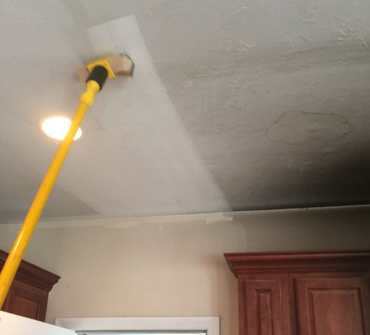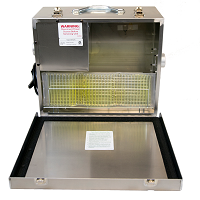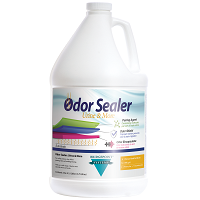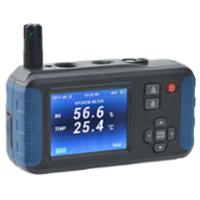The following guidelines are suggestions only. Training and experience will be the most helpful in deciding the best procedures and cleaning agents for use in fire and smoke situations. You can receive professional, in-depth training through an Aramsco Distributor in your area. Please view our education calendar here. Proper testing and care must be taken before using any of the following suggestions and products on any surface.
Types of Fires:
- Protein Fires: These include stove-top fires, burned and charred meat, or most fires where living tissue or hair proteins are involved.
- Wood and Paper Fires: These include attic fires, fireplace puff-backs, most trash can fires, and general home fires where mostly the wood structure is involved.
- Synthetic Fires: These include fires that involve carpeting and upholstered furnishings, electrical fires, and fires where plastic materials have been burnt. Note that most home fires will be a combination of wood and synthetic types.
Safety First
Before starting a soot removal job, equip yourself with proper Personal Protective Equipment (PPE). Wood soot contains many harmful chemicals, and the small size of the particles allows them to penetrate deep into the lungs. Additionally, soot can combine with moisture to form an acid, which is damaging to people and the property. Follow IICRC guidelines on proper PPE. At a minimum, wear an N95 mask, safety glasses, and chemical-resistant gloves.
Compatibility Testing
Before cleaning items, test to ensure that anything cleaned with water-based cleaning solutions is not sensitive to water. This includes distortion, color bleed, warping, etc. If an item is water-sensitive, dry cleaning methods will need to be used. Contact your local Aramsco if you have questions.
Timing
Soot is acidic and can quickly ruin the surfaces in your home. Soot can damage plastics, stone, metal, grout, painted surfaces, and textiles. Soot can also be inhaled into the lungs and contribute to severe respiratory illnesses. When removing and cleaning soot-covered surfaces time is of the essence. Begin immediately.
How to Remove Smoke Odors and Soot From Surfaces - Step by Step
- STEP 1 – DISPOSAL
Dispose of any heavily charred materials that can’t be salvaged.
- STEP 2 – DRY SOOT REMOVAL
Wood fires are generally the easiest to clean up. The soot left behind is often dry and more easily removed by vacuuming and the use of a soot sponge than plastic or protein fires. Use a HEPA vacuum to remove as much soot as possible. A non-HEPA vacuum will just blow the soot back into the air.
Follow the vacuuming up with a soot sponge (also called a dry cleaning sponge) or a lamb’s wool duster. Wear gloves and avoid getting the sponge wet as this will stop the sponge’s ability to "grab" soot particles. Use the sponge like a giant eraser. The sponge will provide physical agitation and remove soot that the vacuum can’t. Be careful not to apply too much pressure when removing soot with a soot sponge on porous surfaces. You want to avoid driving the soot deeper into the surface. Using the soot sponge, clean from the top down.
- STEP 3 – CLEANING

Soot caused by synthetic material, like plastic, will be oily and can’t be removed with vacuuming and soot sponges alone. Heavy-duty degreasers are required to break down the bonds the soot has with the surface. Most fires are a mix of synthetic and wood, so you’ll almost always need to use a degreaser to completely remove the soot. Glass, highly-polished metal surfaces such as appliances, and natural stone are quickly damaged by acidic soot. Clean these surfaces first.
-
- Glass
- Spray OmniPro Ultimate Glass Cleaner onto the glass surface and wipe off using a microfiber cloth.
- Glass
-
- Hard Surfaces: Tile, Stone, Concrete, Countertops, Painted Drywall
- Spray or sponge OmniPro Vission or OmniPro Fire Power onto the surface at the recommended dilution. Wash vertical surfaces starting from the bottom up. This will prevent streaks. Rinse with water and wipe dry. For surfaces that are not water sensitive, a Gekko SX-7 can be used to power rinse surfaces. This will speed up the rinsing process.
- Hard Surfaces: Tile, Stone, Concrete, Countertops, Painted Drywall
-
- Textiles: Carpet, Upholstery, and Clothing
- Apply OmniPro Soot Wash according to directions. See the video of how OmniPro Soot Wash works to remove soot from clothes.
- If boosting is needed for:
- Whitening – add Bridgepoint Systems Boost All according to directions
- Degreasing – add Bridgepoint Systems Citrus Solv II according to directions
- Deodorizing – add OmniPro Smoke and More, Original
- Rinse carpet and upholstery according to directions with either Flex Fire for polyester or olefin fibers, or Flex Ice for nylon or wool fibers.
- Textiles: Carpet, Upholstery, and Clothing
-
- Wood
- Porous, deeply stained wood might require the use of a degreaser to lift the soot out of the pores. Apply a light amount of OmniPro Vission, if needed, to remove embedded soot. Use as little as possible and be aware that excess water can warp the wood. Wipe off any remaining moisture.
- If a degreaser won’t remove the soot, you can use #0000 steel wool.
- After cleaning, the oils in the wood can be removed and leave the wood looking dull. Apply OmniPro Lemon Oil Furniture Polish to restore luster back to the wood.
- Wood
- STEP 4 – ODOR NEUTRALIZATION

-
- Vaportek Vapor Shark along with Smoke Odor Solution (SOS) membranes, or a Hydroxyl Generator can be used as soon as you begin working since they can be used in occupied areas.
- Use a ULV (cold) fogger to apply OmniPro Smoke & More Lemon or OmniPro Smoke & More Original at the recommended dilution.
- When spraying a hard surface like drywall, wipe off the surface using a towel to prevent water spots. Some surfaces like glass won’t need deodorization if they’ve been cleaned properly.
- If a ULV fogger isn’t reducing the odor, try using a thermal fogger. A thermal fogger creates smaller particles than a ULV fogger which allows them to penetrate deeper into materials. Proper safety procedures, including appropriate respiratory protection, must be followed when using a thermal fogger. Use the following deodorizers for these types of fires:
- Protein Fires: Odorx Thermo2000, Citrus
- Wood and Paper Fires: Odorx Thermo-2000, CherryL
- Synthetic (plastics) Fires: Odorx Thermo-2000, Kentucky Blue Grass
- STEP 5 – ODOR SEALING
Some odors are so extreme that they require a sealer to prevent them from returning. This is often the case with porous materials like drywall or wood. The small size of the smoke molecule, and the heat and pressure from the fire, drive the molecule so deep into the material that cleaners and deodorizers are ineffective at removing these odors. 
In these severe cases, a sealer can be painted onto the material to permanently trap odors behind a water-permeable barrier. It is important to use a professional-level sealer. Cheaper sealers will cost you much more money in the long run since odors, and even smoke stains can reappear after painting over the sealer. This will require you to repeat the sealing process with a higher-quality sealer, ultimately costing you much more in labor and materials. Do it right the first time.
-
- Ensure the surface is dry and free from soot before applying sealer.
- Apply sealer according to label directions. Sealers can be sprayed, rolled, or brushed on.
- Recommended sealers:
- Clear to Milky White: Bridgepoint Systems Odor Sealer: Urine & More, Fiberlock Recon Ultra Smoke Odor Sealer
- White: Fiberlock Recon Ultra Smoke Odor Sealer
- Once dry, the surface may be painted. The sealers above serve as both primer and sealer.
Attributes to look for in a Quality Sealer
-
- A water-based formulation- A water-based sealer will save you time, money, and headaches. Oil-based formulations increase the risk of fire damage and require extra care: increased ventilation, evacuation of inhabitants, and removal of all ignition sources. Legacy sealers, such as shellacs should be avoided except for very niche circumstances since water-based sealers will be the best choice for the vast majority of fire jobs you deal with.
- A sealer that will seal in smoke odors but will be permeable and allow water evaporation- This prevents condensation behind the sealed surface which can lead to mold and water damage.
- Easy to clean up and remove from spraying/painting equipment- Some sealers can become so hard and impervious to chemical cleanup that you’ll have to throw away your paint sprayer.
- Low volatile organic compounds (VOCs)- Water-based formulations almost always produce lower VOCs than their oil-based counterparts.
- Easy waste disposal requirement- Oil-based solutions will generally have special disposal requirements.
- Minimal PPE requirements- It’s always advisable to use eye and hand protection, but oil-based sealers will often have special respiratory PPE requirements as well.
- Minimal off-gassing odors
- Easy mixing- Shellacs and oil-based sealers can be difficult to mix.

MISC. TIPS
- Water damage is often a secondary issue with structural fires. Detect wet areas using an OmniPro meter. OmniPro M18-400 Multifunction Meter: moisture, psychrometer, IR thermometer
- OmniPro T16-200 IR thermometer
- OmniPro M18-500 Restoration Multi Meter: hygrometer, IR thermometer, distance meter
- Accelerate drying of large areas with a large OmniDry air mover, or for small areas, like closets, use the OmniDry mini air mover.
- Air quality can be measured using an OmniPro X16-200 Mini Particle Counter.
Questions or comments? Leave a note in the comments section below.
